by Lorri | Nov 23, 2011 | UnCorked
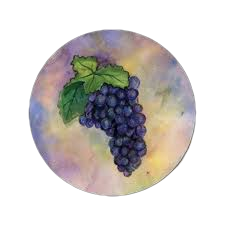 I can’t say I’ve ever considered myself one to be frustrated with a grape. Until now. Over the past few weeks I have experienced the same combination of obsession and confusion the rest of the world seems to have with pinot noir.
I can’t say I’ve ever considered myself one to be frustrated with a grape. Until now. Over the past few weeks I have experienced the same combination of obsession and confusion the rest of the world seems to have with pinot noir.
I set out on a journey to explore this alluring and mysterious grape by scrutinizing my past tasting notes and, of course, tasting a lot of wines in the process. Pinot noir is an incredibly finicky grape that demands ideal growing conditions and is rarely open to any coaxing in the winery. Simply said, it is one tough grape to get right.
As for the splurges over $50 I’ve tasted, frustration was virtually non-existent save for the fact that most of the wines are made in minuscule quantities. Honestly, there was not a bad one in the bunch. And it makes perfect sense if we keep in mind that these are the wines that earned pinot noir its cult status from producers in France, California and Oregon. Not only were there no complaints, but with each taste it became clearer as to why we obsess over this grape. Its simply sublime at its best.
It was the value category that gave me more than a few rough days of tasting. Bottle after bottle in the under $15 range proved to be hit or miss. The blame may not be the grape but the crazed popularity of a few years ago that resulted in plantings anywhere and everywhere, leaving us to wade through a river of not so great wines made from this finicky grape.
The bottom line is that if you wish to experience the greatness of pinot noir, be advised that this grapes best values are rarely bargain priced.
THE VALUE
- 2009 Mark West Central Coast Pinot Noir, California (about $13 retail)
THE SPLURGE
- 2008 Siduri Santa Lucia Pinot Noir, California (about $43 retail)
by Lorri | Nov 16, 2011 | UnCorked
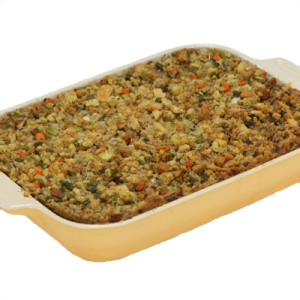 Selecting the right wine to serve with a special dinner can be one of the biggest challenges in planning a celebration. But with the wide variety of flavors — savory green beans, candied sweet potatoes, tart cranberry sauce, creamy mashed potatoes, rich pecan pie — selecting the right wine for Thanksgiving dinner can seem downright impossible.
Selecting the right wine to serve with a special dinner can be one of the biggest challenges in planning a celebration. But with the wide variety of flavors — savory green beans, candied sweet potatoes, tart cranberry sauce, creamy mashed potatoes, rich pecan pie — selecting the right wine for Thanksgiving dinner can seem downright impossible.
Fortunately the common centerpiece of the meal that prevails year after year is the traditional roasted turkey.
Much like chicken, roasted or baked turkey is generally straightforward with its light and neutral taste and texture and an easy wine pair-up. As long as you don’t choose a bold, full-bodied robust wine that will overwhelm the bird, most options are usually a safe bet. But when we start adding the dressing (or stuffing, if you prefer) to this beloved bird we begin the pairing dilemma.
Dressing flavors can be nutty, spicy, earthy and even sweet. That’s a lot to expect from a single wine. As we do in all ideal wine and food pairings, be sure to start with the main flavors in the dish.
Traditional Thanksgiving stuffing (white bread and/or cornbread, celery, onion and sage) matches well with the light refreshing flavors of viognier, pinot gris and sauvignon blanc.
THE VALUE
- 2010 Wente Vineyards Louis Mel Sauvignon Blanc, California (about $13 retail)
THE SPLURGE
- 2010 Presqu’ile Santa Barbara Sauvignon Blanc, California (about $22 retail)
Dressings with dried fruits such as cherries, apples and pears need a wine with touch of sweetness like an off-dry Riesling to complement the fruit.
THE VALUES
- 2010 Franken Silvaner Spatlese Riesling, Germany (about $14 retail)
THE SPLURGES
- 2009 Rudi Wiest Monchhof Estate Riesling, Germany (about $20 retail)
Wild rice brings a nutty flavor to stuffing. A fresh fruity red merlot is an excellent complement.
THE VALUE
- 2009 Michel Lynch Merlot, France (about $12 retail)
THE SPLURGE
- 2009 Bell Wine Cellars Yountville Merlot, California (about $36 retail)
Mushroom stuffing is one of the most wine-friendly you can serve. If other ingredients do not overpower the earthy flavors it shines with pinot noir.
THE VALUE
- 2009 Concannon Winery Central Coast Pinot Noir, California (about $12 retail)
THE SPLURGE
- 2009 Presqu’ile Rim Rock Vineyard Pinot Noir, California (about $55 retail)
by Lorri | Nov 9, 2011 | UnCorked
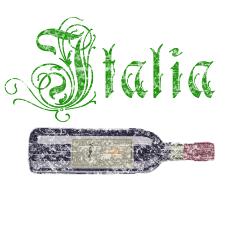 Sangiovese, Nebbiolo and Barbera, despite their discreet natures, are sometimes called the “Italian Mob.” They earned this moniker because of their dominance in the Italian wine industry. Their hierarchy status rarely gets recognition on labels, and the wines take a back seat to the international familiarity of chardonnay and cabernet sauvignon. But these wines shouldn’t be ignored.
Sangiovese, Nebbiolo and Barbera, despite their discreet natures, are sometimes called the “Italian Mob.” They earned this moniker because of their dominance in the Italian wine industry. Their hierarchy status rarely gets recognition on labels, and the wines take a back seat to the international familiarity of chardonnay and cabernet sauvignon. But these wines shouldn’t be ignored.
Sangiovese has been associated with the inexpensive raffia-covered bottles sitting on restaurant tables around the world. But at its best, it is the grape behind Chianti from the Tuscany region.
These serious wines are brilliantly concentrated with earthy rich plum and black cherry, and because of their gripping tannins, they have the ability to age to perfection.
Nebbiolo, the famous grape behind the Barolo wine, is grown in Italy’s northwest region of Piedmont.
When compared to other grapes in this lineup, it is by far the most renowned for making aggressive, highly tannic red wines with alluring aromas and flavors — floral, roasted meats and spice.
Last but not least is the Barbera, which has played second fiddle to the Nebbiolo. Barbera grows throughout Italy, but it is in the vineyards of Piedmont that for centuries the most concentrated and complex examples of this grape have been grown. Its style can be fresh and fruity with cherry flavors or a full-bodied intense wine.
THE VALUES
- 2009 Cecchi Chianti Classico, Italy (about $15 retail)
- 2009 Da Vinci Chianti, Italy (about $21 retail)
- 2009 Michele Chiarlo Barbera d’ Asti, Italy (about $15 retail)
THE SPLURGES
- 2009 Santa Margherita Chianti, Italy (about $30 retail)
- 2009 Antinori Peppoli Chianti Classico, Italy (about $30 retail)
by Lorri | Nov 2, 2011 | UnCorked
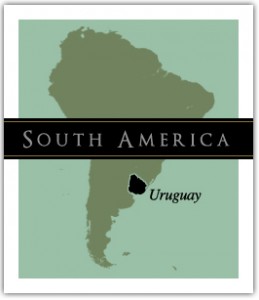 The global choices in wine continue to grow, with Uruguay as the next exciting place to explore. The South American country has an ideal climate for grape growing and shares many similarities with other fine wine regions in the world.
The global choices in wine continue to grow, with Uruguay as the next exciting place to explore. The South American country has an ideal climate for grape growing and shares many similarities with other fine wine regions in the world.
Situated in the Southern Hemisphere on the 34th parallel, Uruguay has an ideal balance of sun, rainfall, temperature and gentle hills, requiring little if any artificial irrigation. This balance is influenced by Atlantic breezes, much like the Bordeaux region of France, but with the intensity of sunlight similar to Argentina and Chile.
Not only does Uruguay offer unique growing conditions, it also has a niche almost all to itself, the tannat grape. It’s a little-known variety originally grown in southwest France and introduced into the country in the late 1800s. It’s considered the national variety, adapting itself perfectly to the local soil and climate. The grape represents a third of all wine produced in Uruguay.
The tannat grape has been known for its extremely high tannins (which also explains how the grape got its name) and often needs extensive aging or blending with other grapes just to soften. But Uruguayan winemakers are producing a more approachable wine with a lower alcohol content.
The thick skins of the grape give the wine a deep color. It has the rich flavors of chocolate, spice and raspberry. This new tannat will be the exceptional style the world will be seeing more of before long.
THE VALUE
- 2010 Pizzorno Don Prospero Tannat, Uruguay (about $12 retail)
THE SPLURGE
- 2009 Pizzorno Reserva Tannat, Uruguay (about $19 retail)
by Lorri | Oct 26, 2011 | UnCorked
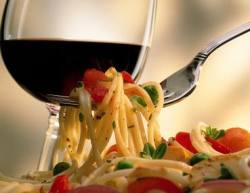 I think we all assume pasta and wine are a straightforward pairing. Pick an Italian wine and the match should work. Over the past few weeks I have experimented with different pasta and wine combinations. It was arduous work but somebody had to do it.
I think we all assume pasta and wine are a straightforward pairing. Pick an Italian wine and the match should work. Over the past few weeks I have experimented with different pasta and wine combinations. It was arduous work but somebody had to do it.
The experiments reinforced one basic rule: It doesn’t matter if the pasta is long, short, a tube or spiral … it’s the sauce and filling that counts.
Pasta served with meatballs and meat-based sauces such as bolognese pair best with reds such as zinfandel, sangiovese, merlot, shiraz, syrah.
THE VALUE
- 2009 Cline Cellars Sonoma County Syrah, California (about $12 retail)
THE SPLURGE
- 2008 Ridge Vineyards Ponza Zinfandel, California (about $30 retail)
Dishes such as spinach lasagna, ricotta-stuffed manicotti or stuffed mushrooms partner well with chardonnay, Soave, pinot noir.
THE VALUE
- 2010 Mark West Central Coast Pinot Noir, California (about $12 retail)
THE SPLURGE
- 2009 Rex Hill Willamette Valley Pinot Noir, Oregon (about $25 retail)
When it comes to seafood pasta dishes, whether crab, mussels, shrimp or lobster, white wine such as chardonnay, sauvignon blanc, albarino or pinot grigio is the way to go.
THE VALUE
- 2010 La Cana Albarino, Spain (about $17 retail)
THE SPLURGE
- 2010 Keenan Napa Valley Chardonnay, California (about $25 retail)
For creamy sauces, safe bets include chardonnay or Soave.
THE VALUE
- 2011 Kendall Jackson Avant Chardonnay, California (about $13 retail)
THE SPLURGE
- 2010 Cakebread Cellars Napa Valley Chardonnay, California (about $31 retail)
Pinot grigio, Orvieto, sauvignon blanc and albarino are good options for cold pasta salads.
THE VALUE
- 2011 Ruffino Orvieto, Italy (about $10 retail)
THE SPLURGE
- 2011 A to Z Pinot Gris, Oregon (about $17 retail)
Pesto can vary from the familiar blend of basil and pine nuts to more unusual combinations like sun-dried tomato or roasted red peppers and walnuts. Consider sangiovese, merlot or chardonnay for complementary wines.
THE VALUE
- 2010 Michel Lynch Merlot, France (about $12 retail)
THE SPLURGE
- 2008 Bell Vineyards Yountville Merlot, California (about $34 retail)
by Lorri | Oct 19, 2011 | UnCorked
 Buttery, tannic, structured, oaky — for the uninitiated, wine lingo can be confusing. It’s almost like listening to a foreign language, where many of the words sound the same, but have different meanings.
Buttery, tannic, structured, oaky — for the uninitiated, wine lingo can be confusing. It’s almost like listening to a foreign language, where many of the words sound the same, but have different meanings.
These words are not meant to be confusing, but an attempt at establishing a language for describing wine. The terms, while not official, are common descriptors used to discuss the vast array of wine styles.
Many of these terms appear regularly in Uncorked, but a couple may be new to some readers.
Crisp: This term is used to describe a wine having a high amount of acidity. It’s the same sharp, puckery sensation of biting into a Granny Smith apple.
Flabby: The opposite of crisp, this refers to a wine with too little acidity. It is usually caused by either picking grapes too late or their exposure to excessive heat during ripening. Both factors allow the grape acids to decompose. The wine will have a flat, uninteresting taste.
Finish: A wine’s finish is a term for the after taste. Young, simple wines will generally have a “short” finish and more complex wines will leave you tasting flavors long after your initial sip.
Big: If a wine is high in alcohol it is described as being big and full-bodied.
Well-balanced: A wine is well-balanced when its alcohol strength, acidity, sugar and tannin complement each other so no single element is obtrusive or overpowering.
Green: This term is used when a wine is made from grapes not reaching full ripeness. The wine will taste tart and sometimes have harsh flavors and textures.
Hard/harsh: A wine with too much tannin and not enough fruit.
Closed: When opening youthful wines intended for aging, the aromas and taste are sometimes almost void. This void or “closed” state is not considered a fault, rather a stage in a wine’s aging process. Many times aerating the wine brings out the aromas.
Hot: This is used to describe a wine too high in alcohol. It causes a prickly or burning sensation on your palate. It’s common in fortified wines but makes most dry table wines fall out of balance.
 I can’t say I’ve ever considered myself one to be frustrated with a grape. Until now. Over the past few weeks I have experienced the same combination of obsession and confusion the rest of the world seems to have with pinot noir.
I can’t say I’ve ever considered myself one to be frustrated with a grape. Until now. Over the past few weeks I have experienced the same combination of obsession and confusion the rest of the world seems to have with pinot noir. Selecting the right wine to serve with a special dinner can be one of the biggest challenges in planning a celebration. But with the wide variety of flavors — savory green beans, candied sweet potatoes, tart cranberry sauce, creamy mashed potatoes, rich pecan pie — selecting the right wine for Thanksgiving dinner can seem downright impossible.
Selecting the right wine to serve with a special dinner can be one of the biggest challenges in planning a celebration. But with the wide variety of flavors — savory green beans, candied sweet potatoes, tart cranberry sauce, creamy mashed potatoes, rich pecan pie — selecting the right wine for Thanksgiving dinner can seem downright impossible. Sangiovese, Nebbiolo and Barbera, despite their discreet natures, are sometimes called the “Italian Mob.” They earned this moniker because of their dominance in the Italian wine industry. Their hierarchy status rarely gets recognition on labels, and the wines take a back seat to the international familiarity of chardonnay and cabernet sauvignon. But these wines shouldn’t be ignored.
Sangiovese, Nebbiolo and Barbera, despite their discreet natures, are sometimes called the “Italian Mob.” They earned this moniker because of their dominance in the Italian wine industry. Their hierarchy status rarely gets recognition on labels, and the wines take a back seat to the international familiarity of chardonnay and cabernet sauvignon. But these wines shouldn’t be ignored.
 I think we all assume pasta and wine are a straightforward pairing. Pick an Italian wine and the match should work. Over the past few weeks I have experimented with different pasta and wine combinations. It was arduous work but somebody had to do it.
I think we all assume pasta and wine are a straightforward pairing. Pick an Italian wine and the match should work. Over the past few weeks I have experimented with different pasta and wine combinations. It was arduous work but somebody had to do it. Buttery, tannic, structured, oaky — for the uninitiated, wine lingo can be confusing. It’s almost like listening to a foreign language, where many of the words sound the same, but have different meanings.
Buttery, tannic, structured, oaky — for the uninitiated, wine lingo can be confusing. It’s almost like listening to a foreign language, where many of the words sound the same, but have different meanings.